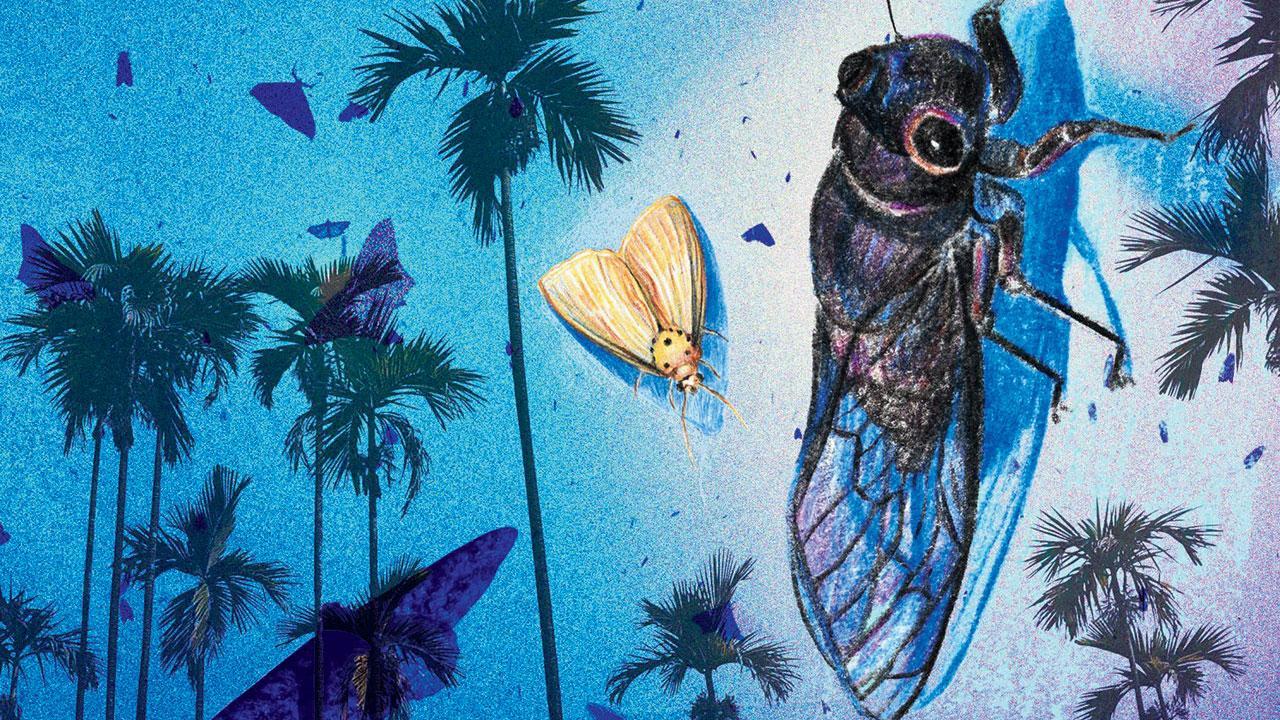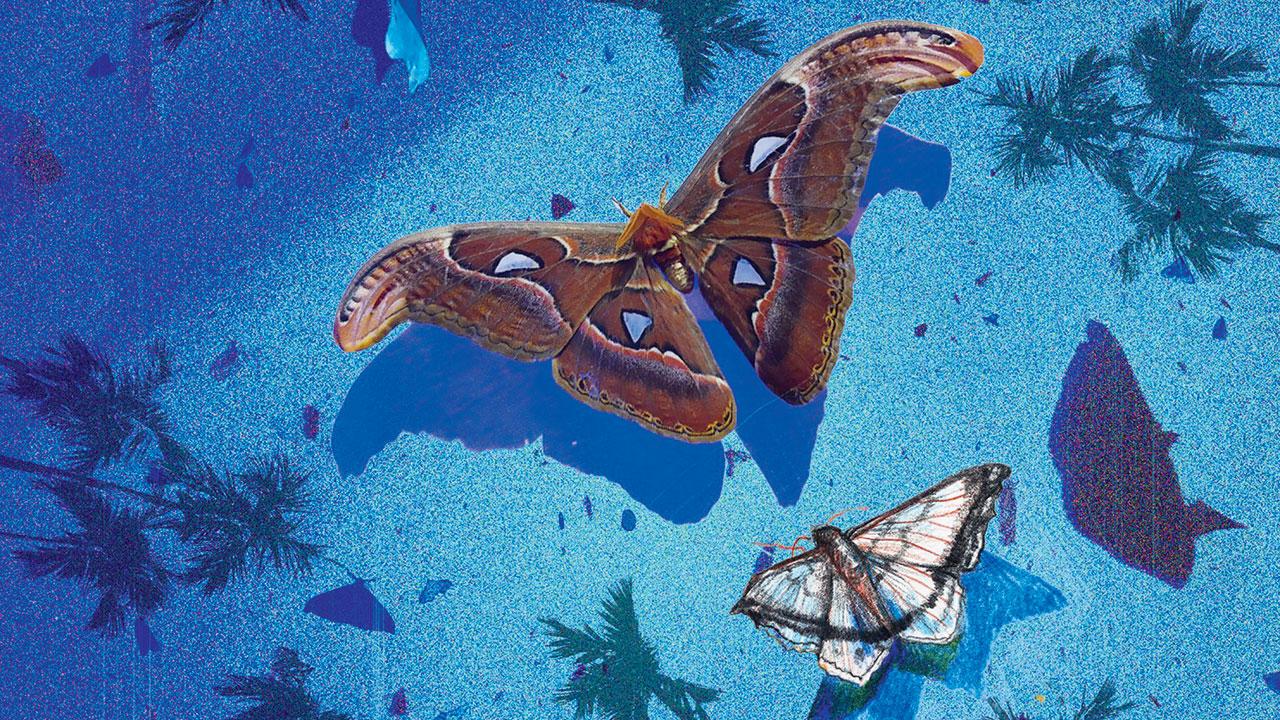Camped in the Western Ghats, an illustrator and a team of biologists joined forces to observe moths for three nights. We deep-dive into an art series that the experience inspired

Cicada
When Labonie Roy describes her adventure of watching moths being drawn to a light trap in the wilderness of Agumbe — a village in Karnataka — this writer is transported to her only memory of seeing a shimmer of fireflies against a pitch-dark sky and even darker dykes of jhau forest on West Bengal’s Tajpur beach. Her voice echoes excitement and conviction in a magic that our rushed routines deprive us of. The illustrator’s academic and professional background has helped her wade through art-based education. Currently a full-time freelance designer who develops educational resources in association with organisations, Roy tells us that her interests somehow happened to align with her career choices.

Atlas moth
ADVERTISEMENT
But, is the moth art series — images that caught the writer’s eye for the thrill of nightly light — a product of chance alignments, too? She elaborates, “Earlier this year, I had applied for a grant from Creature Conserve, a US-based platform that brings artists, scientists and writers together to celebrate and conserve animals and habitats. As part of the prospects of the grant, I collaborated with moth biologist Pritha Dey to study their work and chronicle it through art.” She adds that Dey’s passion for the subject stimulated her curiosity about moths. “I have always felt for insects. I think they get neglected as they are tiny, and because other elements of nature are often sensationalised over them. Also, I wanted to study moths for their easy availability; we don’t need to go far off to enjoy their splendour.”

Labonie Roy in Agumbe
The artworks flaunt cicadas, atlas moths and katydids, among other creatures. They look like twinkles against a screen flashing a rainbow of blue. Roy believes the purpose of her art centres on curiosity: “I want people to be roused enough to ask questions.” The 26-year-old shares that these illustrations were meant to communicate the sense of enchantment that a moth researcher’s job ordinarily involves. “The set-up in the forest, the light-trap and the patient examination felt like a frame out of an alien film. From a distance, the trap did resemble a spaceship.”
Log on to: @labonie.roy
What’s cooking?
Roy’s cryptic social media post that offered a peek into her awareness-driven art on nature left moth-heads guessing about an extension of their recent nocturnal pursuits. Spilling the beans, the illustrator tells us that they — Roy and Dey — are working on a visually rich digital handbook. The booklet employs art as a descriptive tool to nudge interest in moths, document the atmosphere of mothing, convey a researcher’s perspectives on the topic and pass on basic moth 101. Once ready, the handbook will be uploaded online for free and easy access. Both Roy and Dey hope that such efforts move people to know moths further.
The joys of moth-watching
>> A layman doesn’t need to venture out to spot moths. These insects are around us; we only need to be more attentive to their presence. Try and watch caterpillars on hibiscus or lily plants in the day. These caterpillars usually metamorphose into moths.

Pritha Dey
>> Moth-watching doesn’t require fancy equipment. The nocturnal beings are attracted to bright lights; switching on lights at night can attract a diversity of insects. Once a person has been introduced to the passion, they can get mercury-vapour or ultraviolet lamps to charm more moths.
>> Do not pluck a moth or a caterpillar out of its natural surroundings. Do not touch them. These insects have urticating hairs for defence. So, people should observe them from a distance.
>> Learning about the role of moths in the food chain can make people more conscious of their cruciality.
>> In many parts of the country, moths are often considered a bad omen. To debunk such ideas, biologists draw attention to night-time pollination. Pollination in tuberose or jasmine and many other white flowers is facilitated by moths. Would one see these flowers as a bad omen, too?
 Subscribe today by clicking the link and stay updated with the latest news!" Click here!
Subscribe today by clicking the link and stay updated with the latest news!" Click here!








